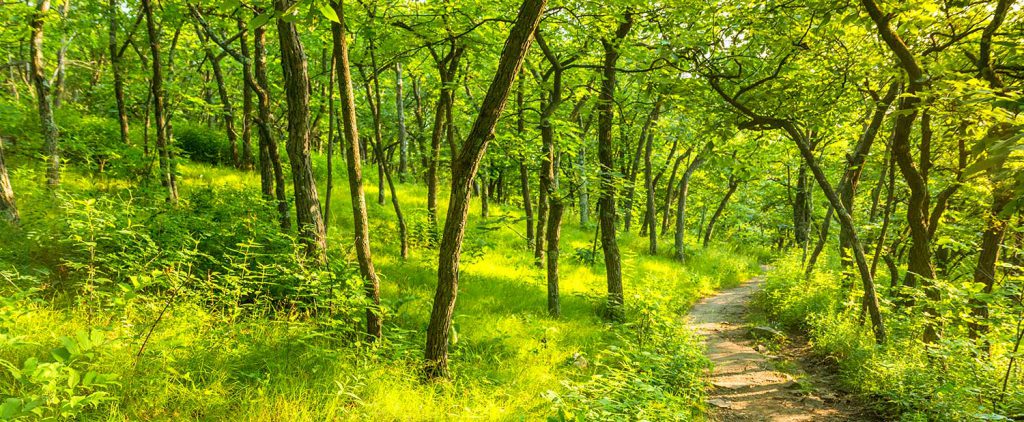
Sitting right on top of Devil’s Lake State Park’s East Bluff is a unique fairytale-like forest. There you’ll find a miniature mix of shagbark hickory and white ash trees that rise just 20 feet or so above a lush glade of soft feathery grass. You might think it was a young forest at first glance, but soon you’ll notice how bent and twisted some of the trees are. In fact, they began to grow here over a hundred years ago!
This little forest is what scientists call a “pygmy forest” or sometimes a dwarf forest or elfin forest. Pygmy forests are usually found at high elevations where although the soil has very few nutrients and cant hold water, the air is sufficiently humid to keep the trees alive but stunted. Pygmy forests are also common on rocky coastlines where again, thin soil but plenty of moisture work together to create these little woods.
Here at Devil’s Lake State Park, the trees of our pygmy forest began to grow in the 1890s. Before then, fires were much more common and kept the hills surrounding the lake grassy and open other than the occasional big oak and other plants that had adapted to our firey environment. With the arrival of European settlers all that changed. While in some areas they cleared the forests, their suppression of wildfires, especially on the rocky glades and outcrops around the lake, allowed trees to fill in. At this particular location, the expanding hickory and ash put their young roots into a thin layer of dirt covering solid quartzite! (Some of the hardest rock on earth!) Without access to enough water & nutrients, they became stunted. In fact, most of the trees you see in this area are not only short, but they are just 3 to 6 inches in diameter. Still, they deserve a little respect, they are after all over 100 years old!
The Pygmy forest is on the park’s East Bluff trail. From the north end it’s about 3/4 the way along the bluff on the southern end. At one point you will see a split in the trail with a map stand. Continue to your right and the Pygmy forest will be about 50 yards ahead.
Ref: dwarf forests, Wikipedia; Songs of Place, Kenneth I. Lange.
